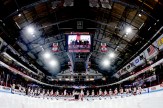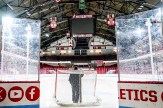New public art installation by Quintessenz brings color to Richardson Plaza
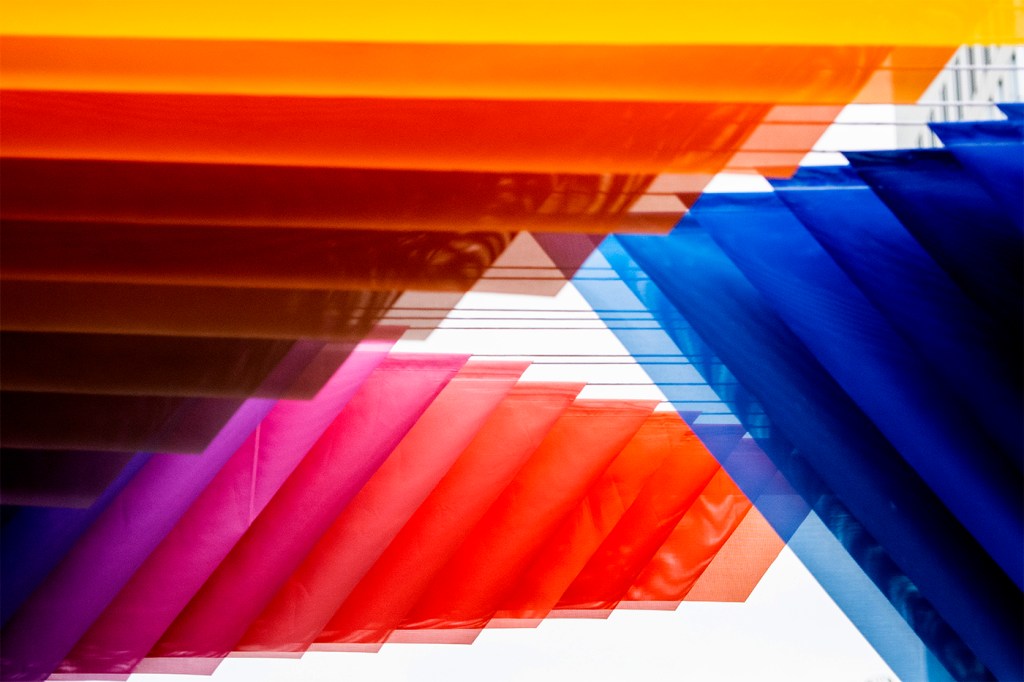
Color, said artist Tomislav Topic, is often an afterthought for people who make things. But he doesn’t think that way.
“Usually when you’re creating, you create the form first, and then pick a color for it,” he said. “We want to put the color first.”
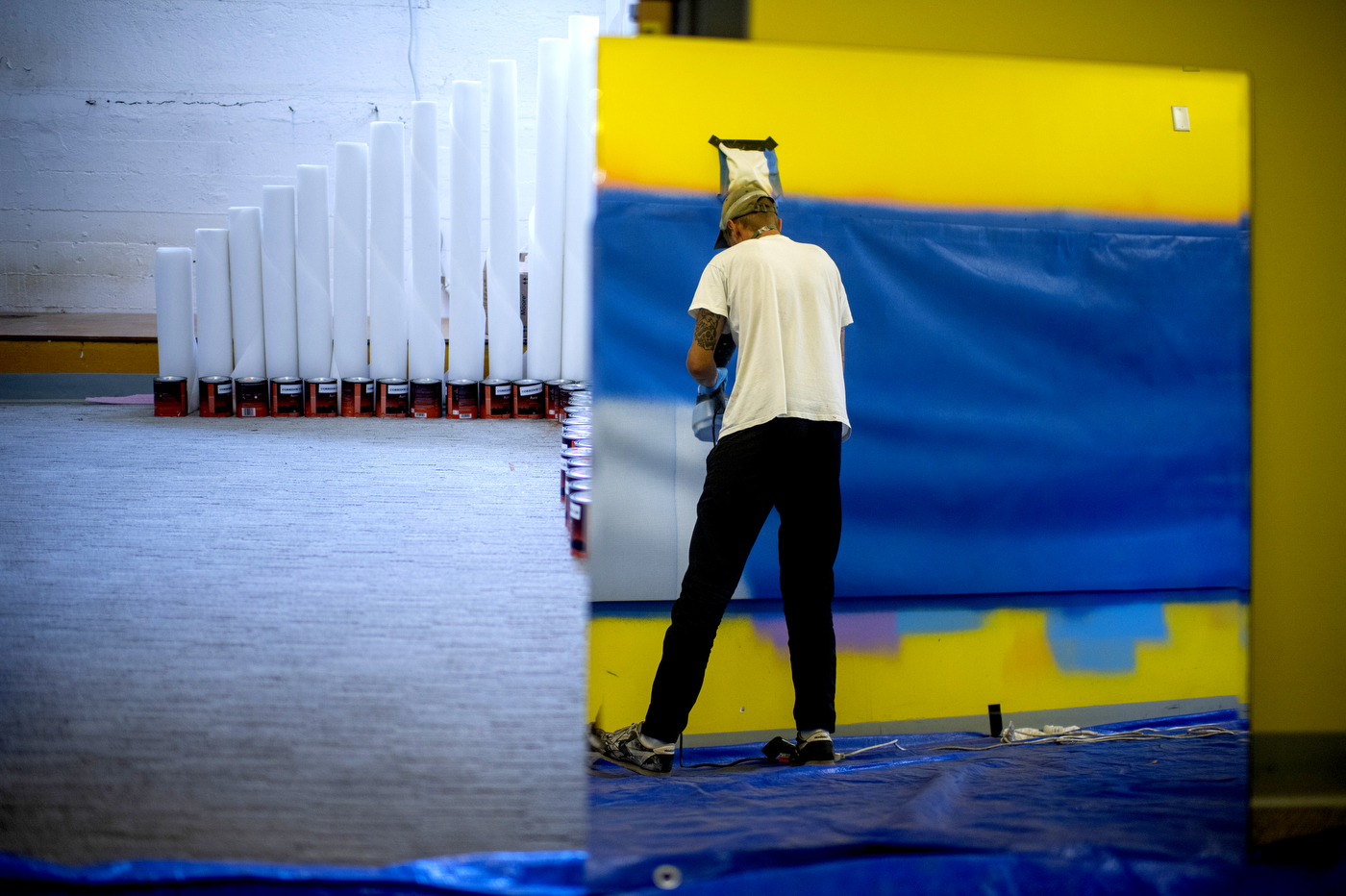
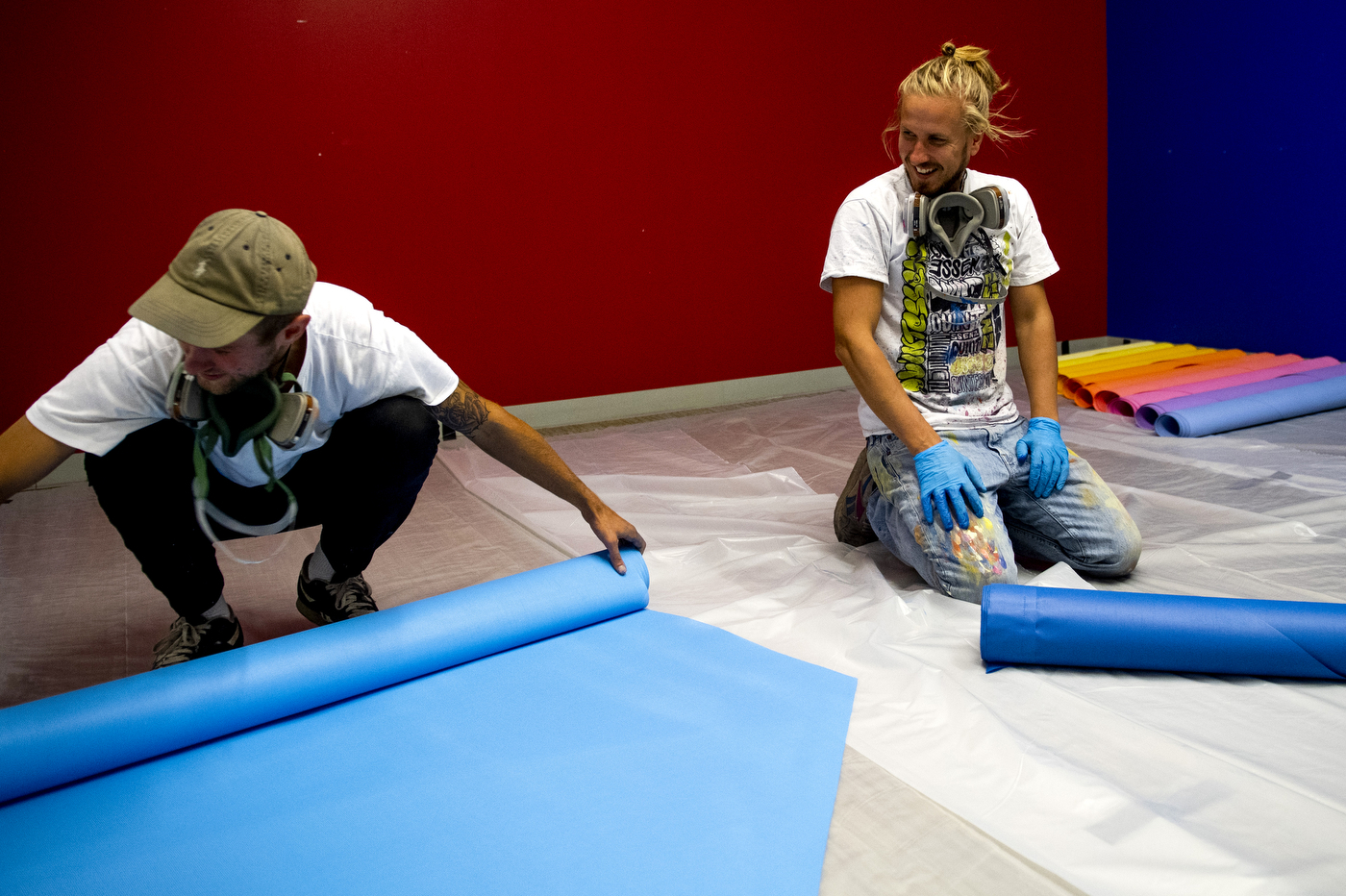
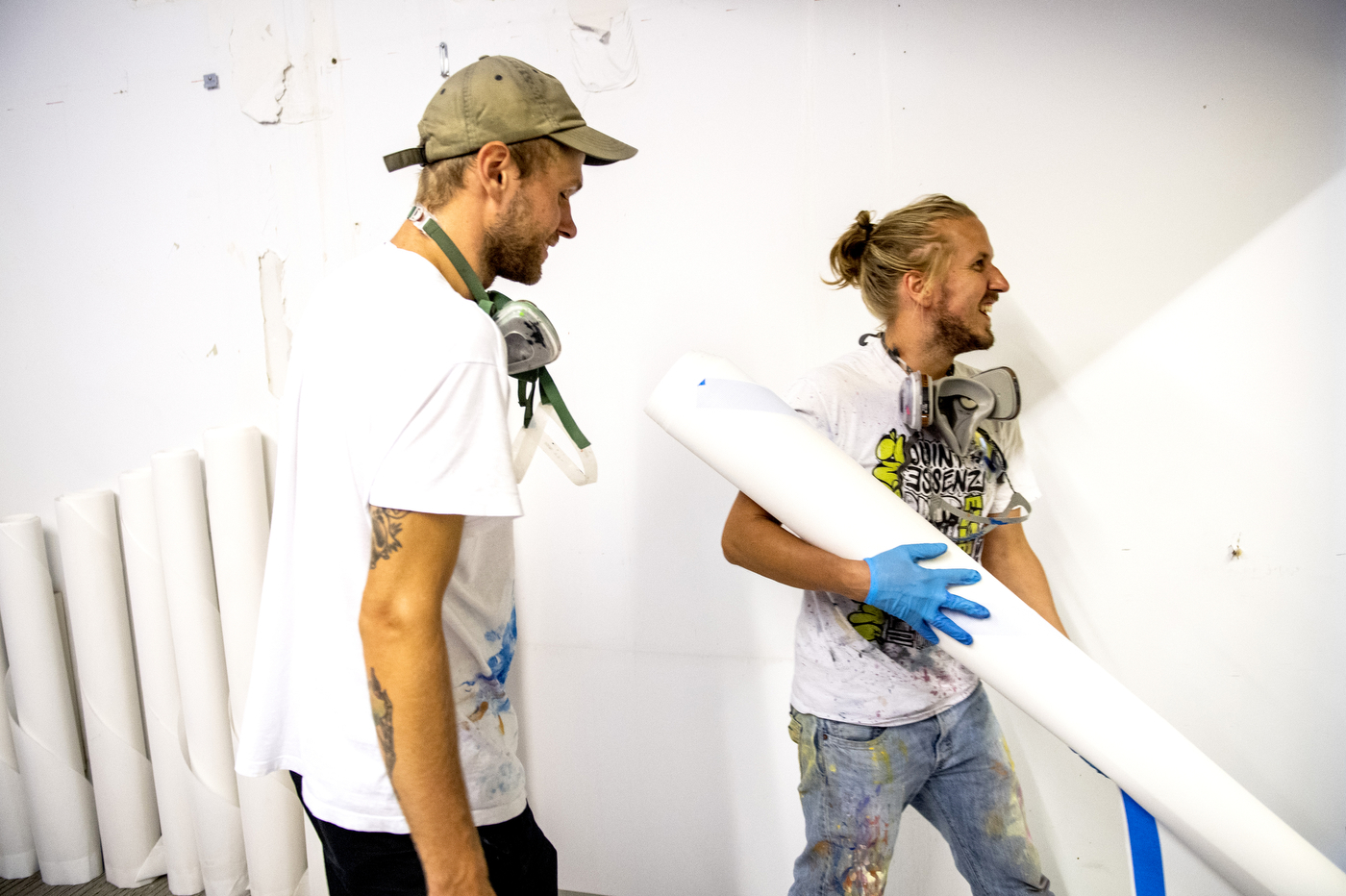
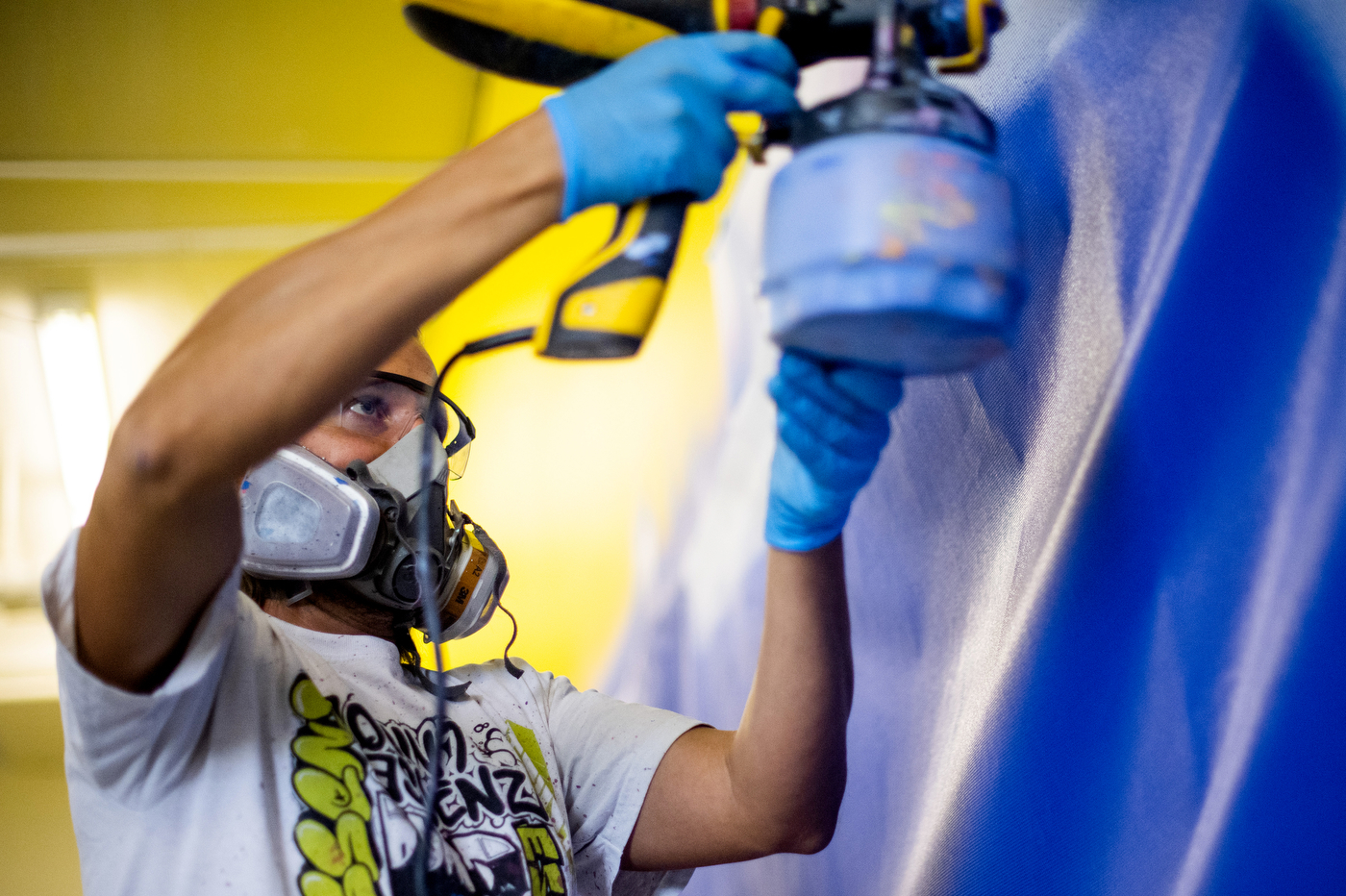
Topic, who is one half of the Berlin-based street art duo known as Quintessenz, prioritized color for a new public art piece that he recently installed on Northeastern’s Boston campus. He and his assistant, Robert Westphal, used 76 unique colors to paint mesh banners and then hung them from two steel structures located at the top of the staircases in Richardson Plaza.
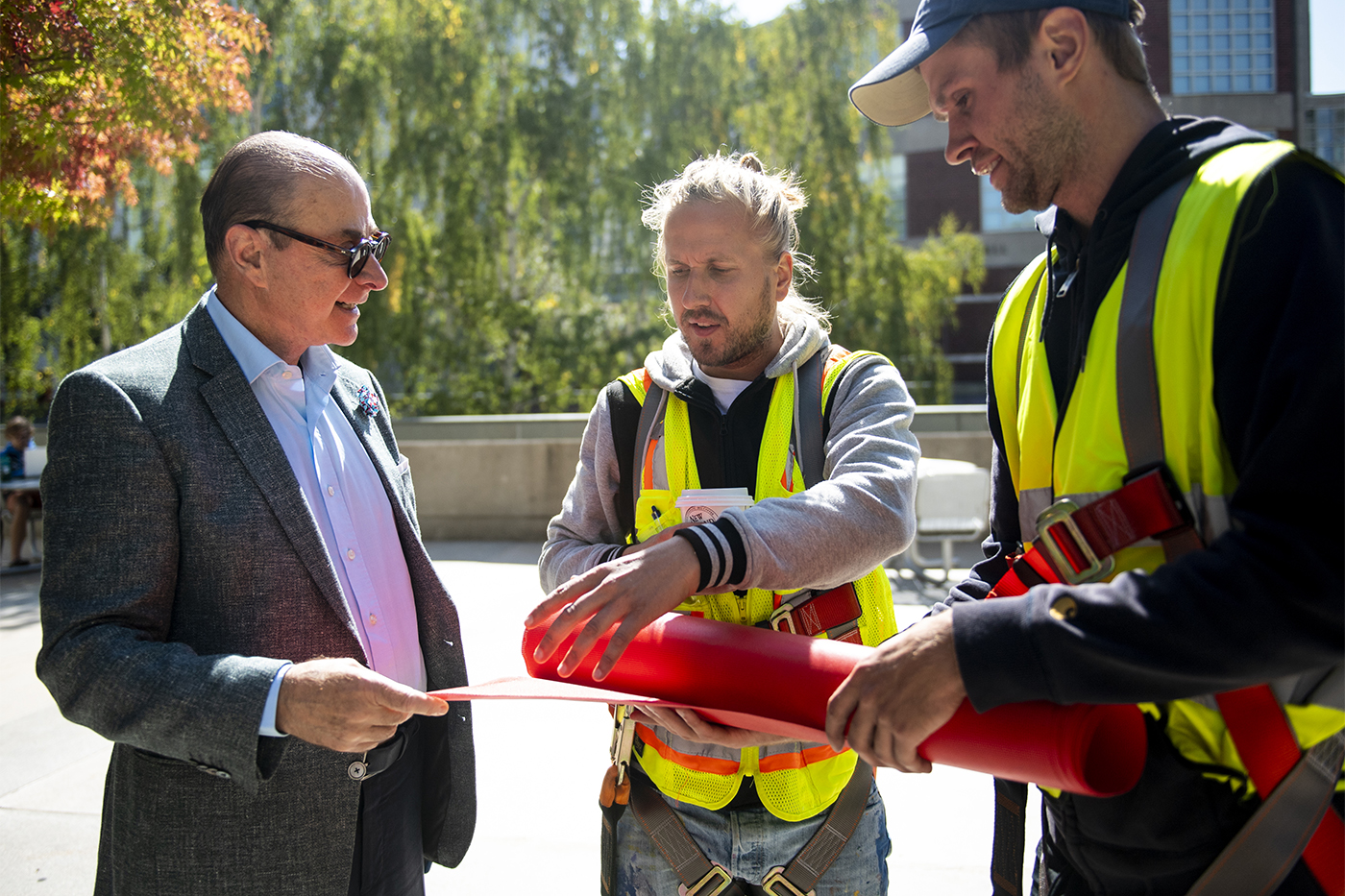
President Joseph E. Aoun meets with artists Tomislav Topić and Robert Westphal while they work on the new public art installation in Richardson Plaza. Photo by Ruby Wallau/Northeastern University
The banners, which burst with brilliant shades of blue, purple, orange, and yellow, create a striking color gradient.
“You notice the colors first,” said Topic, who pointed out that Westphal was filling in for Thomas Granseuer, the other half of Quintessenz, “then maybe the shape they’re in.”
The project is the newest piece in Northeastern President Joseph E. Aoun’s Public Art Initiative, which provides a platform for artists to brighten the Boston campus with their creativity.
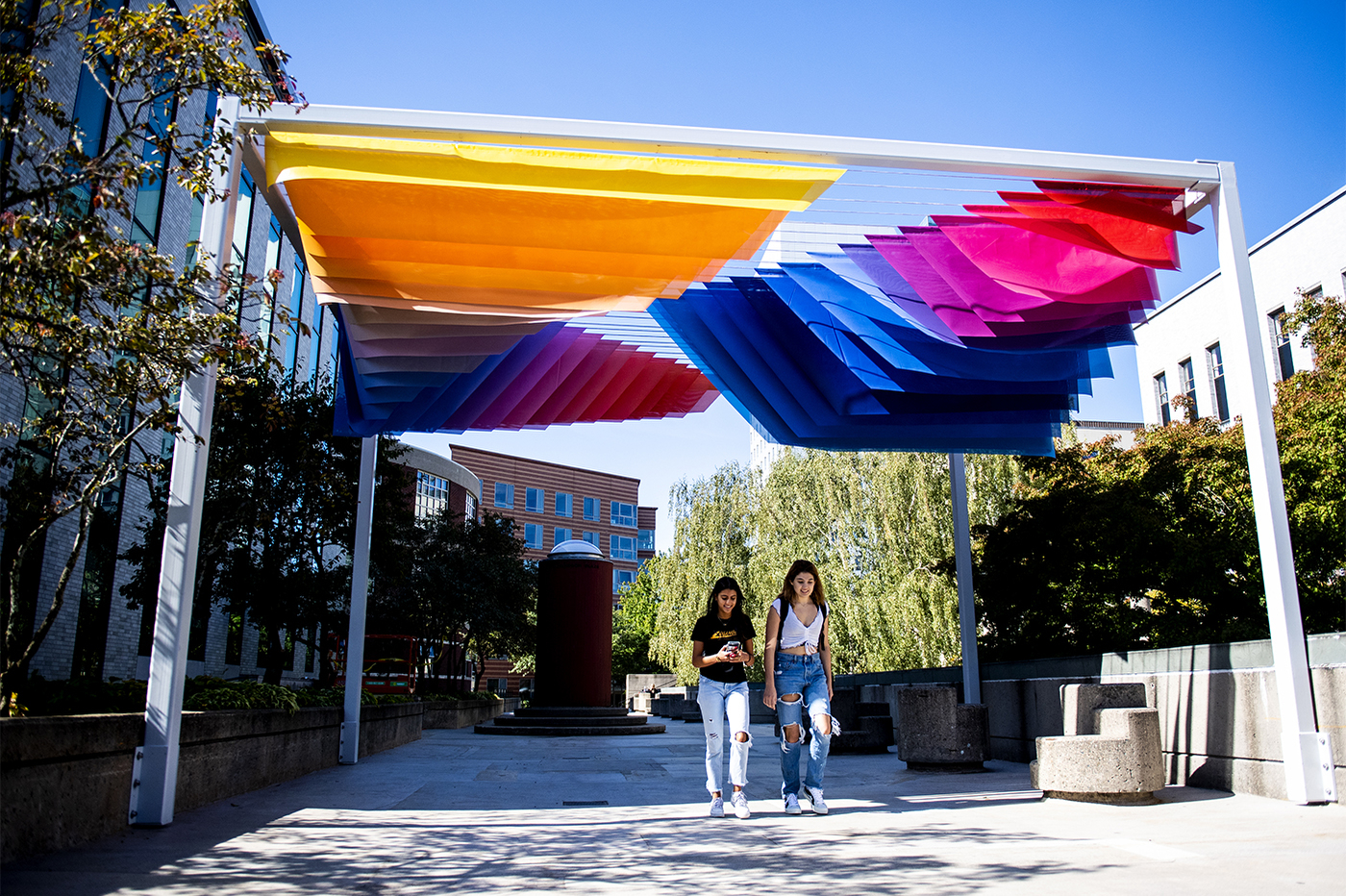
“It’s not usual that universities put an emphasis on public art,” Topic said to Aoun, who dropped by Richardson Plaza one morning to watch the artists work. “But it’s so important for education.”
Students walking along Huntington Avenue and Forsyth Street one afternoon turned to gaze at the work as they strolled by. Later, a student walking into Richards Hall while the artists were working stopped to admire the art.
“It’s beautiful,” she said. “Almost like a sunset.”

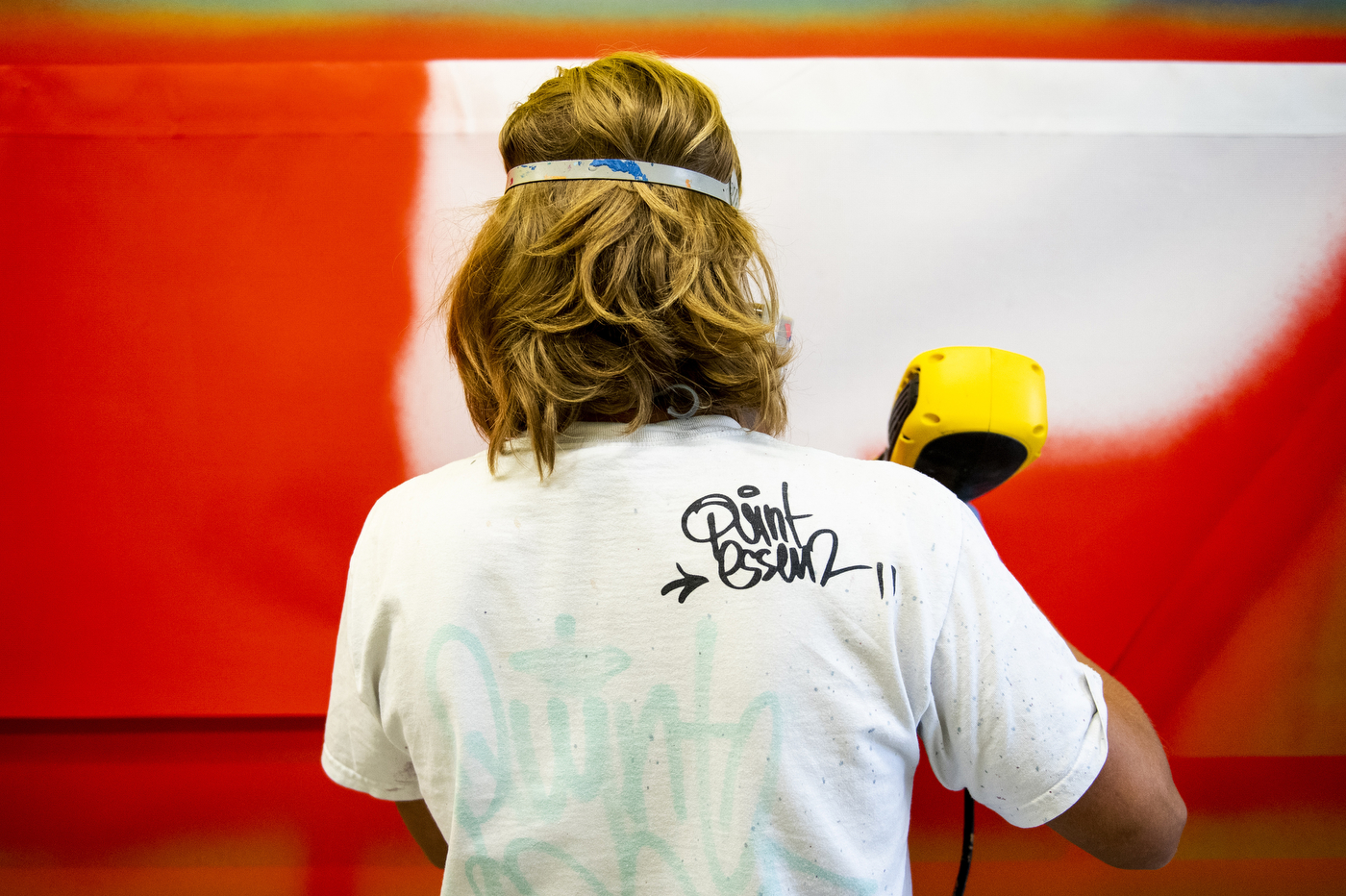
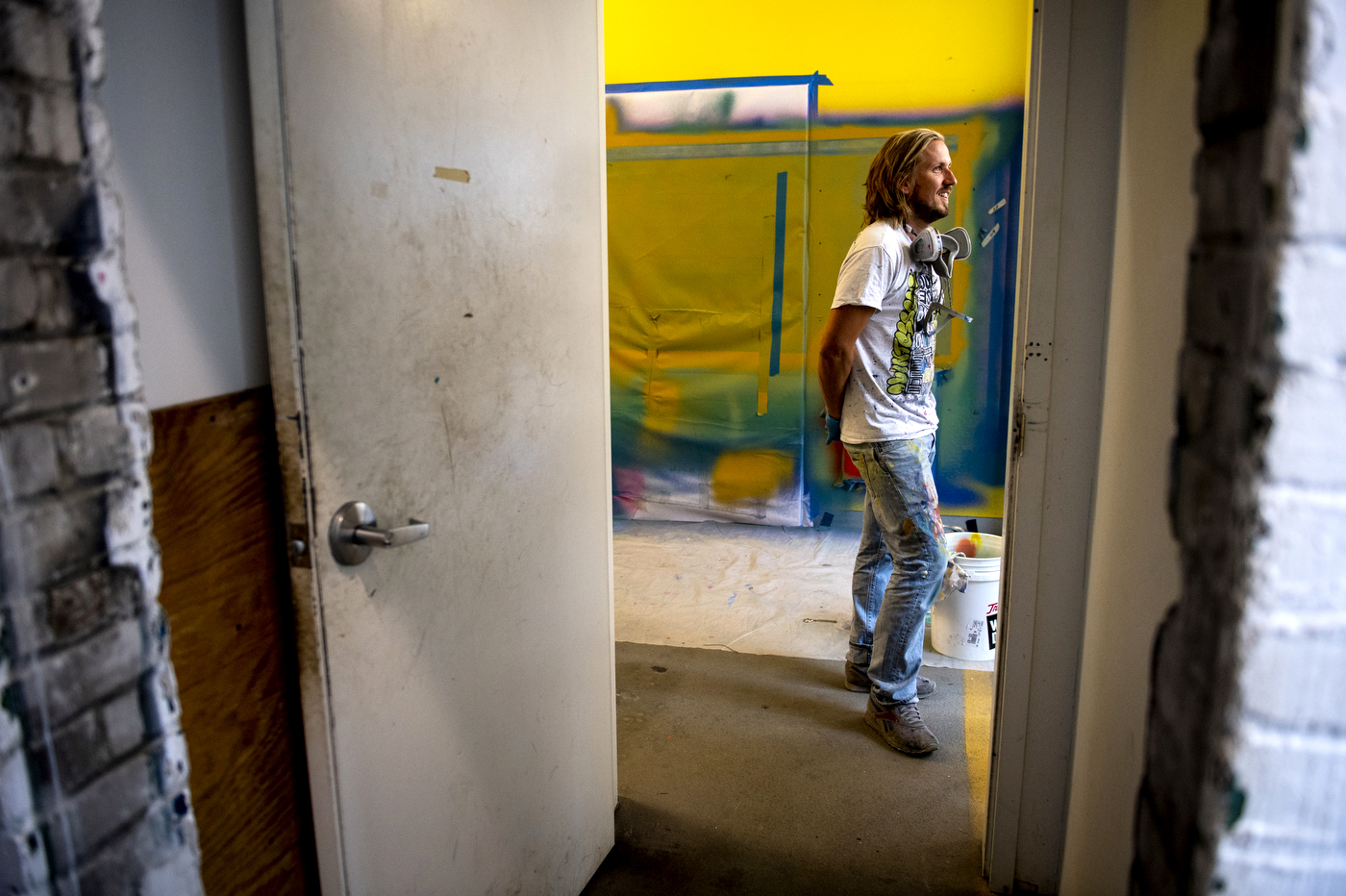
The banners are made from polyvinyl chloride, or PVC, mesh, material that’s commonly used for large, outdoor advertisements because it allows air to flow through a series of small holes that are invisible from afar.
Instead of printing them with a corporate logo, Topic and Westphal used high-quality paint that’s typically used to paint vinyl siding on houses to saturate each hand-cut banner with a different hue.
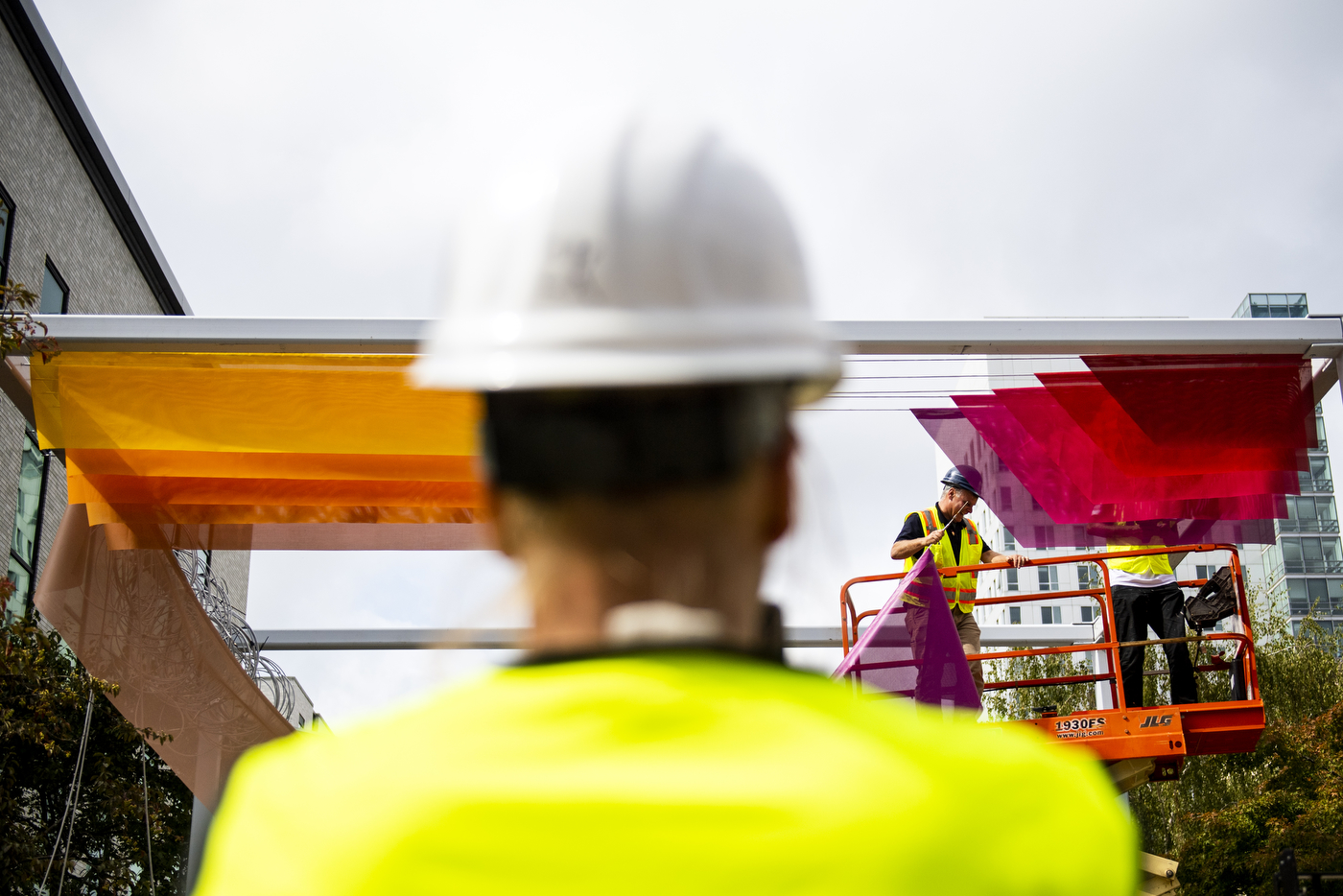
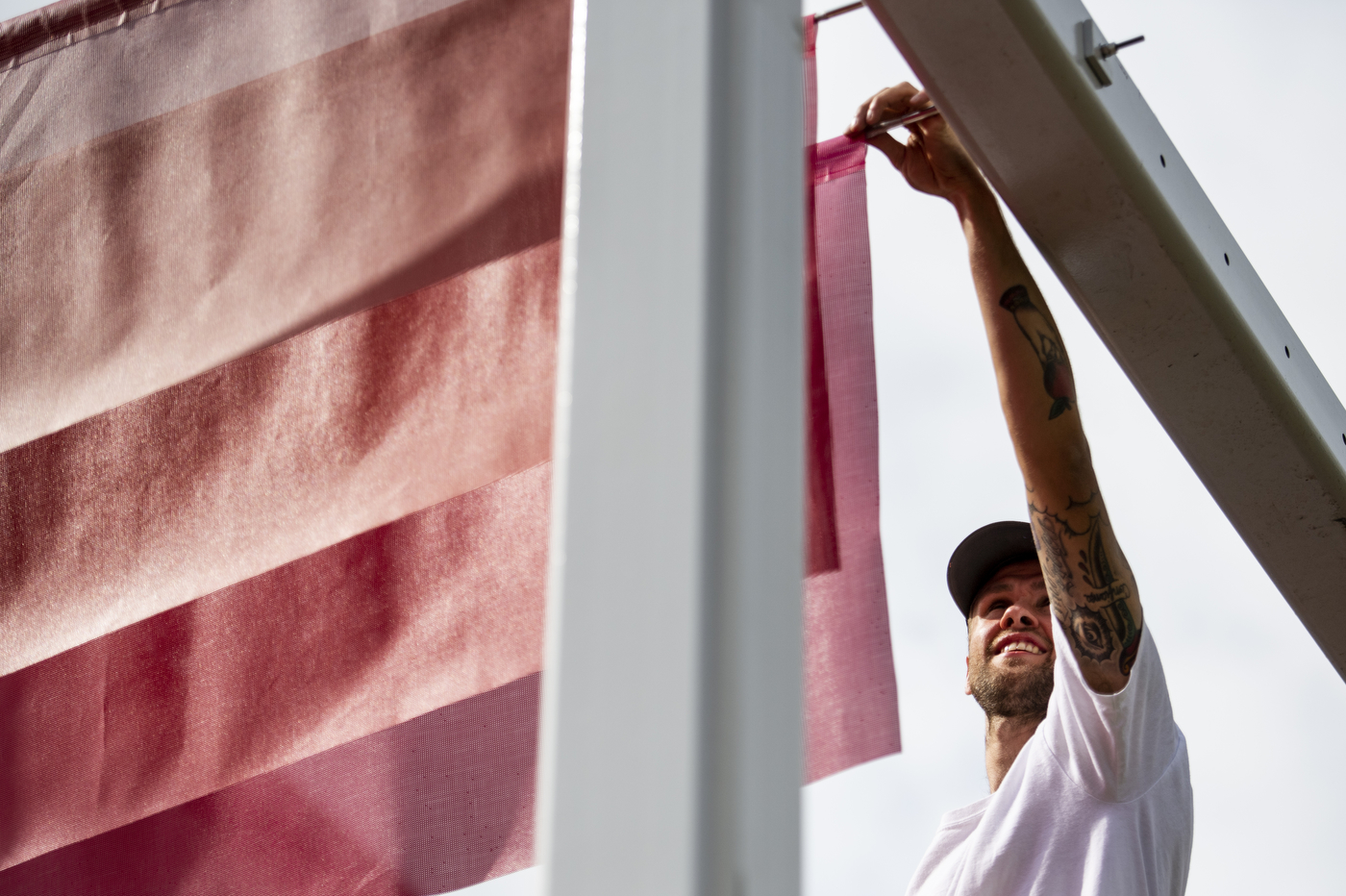
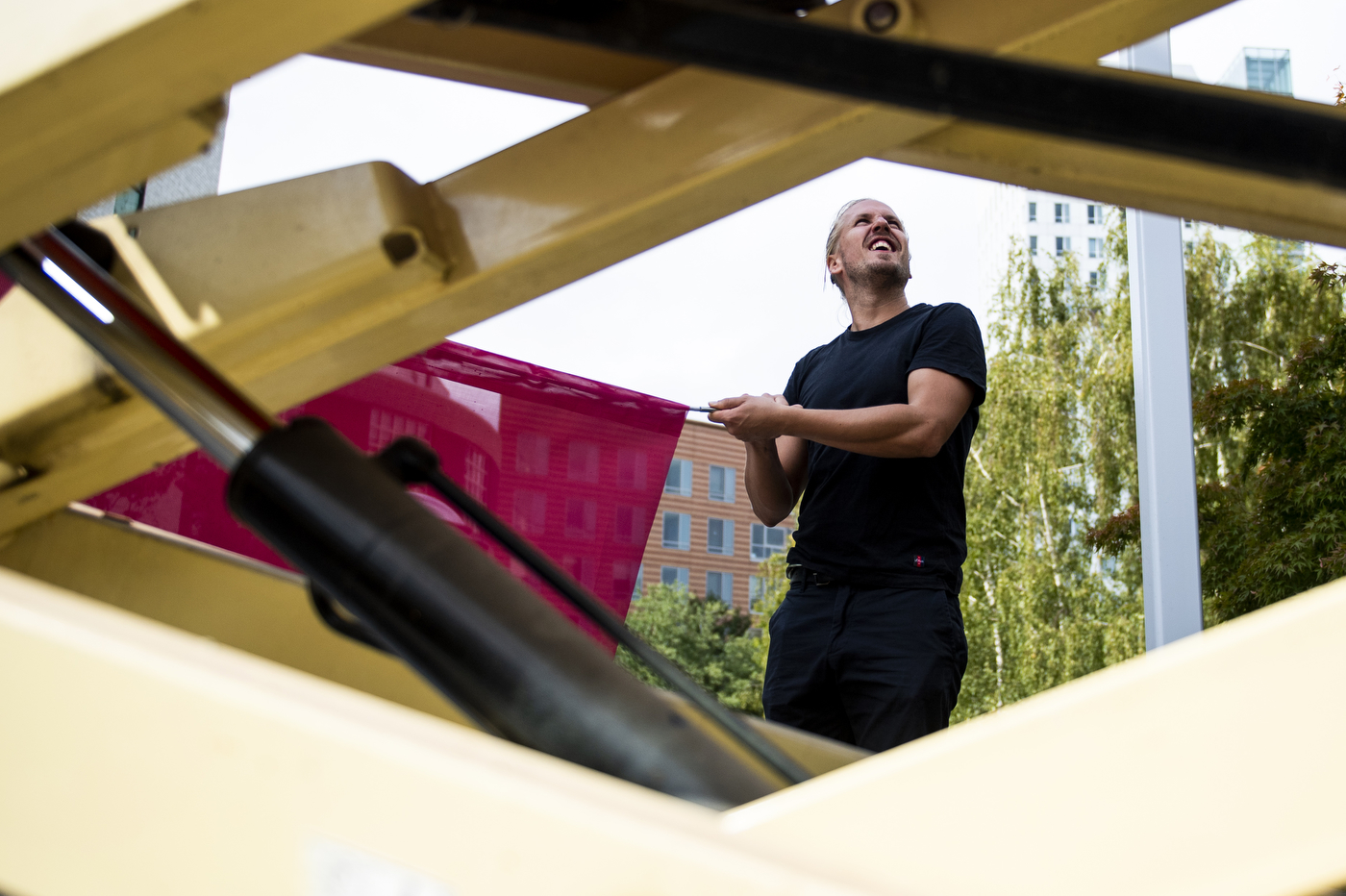
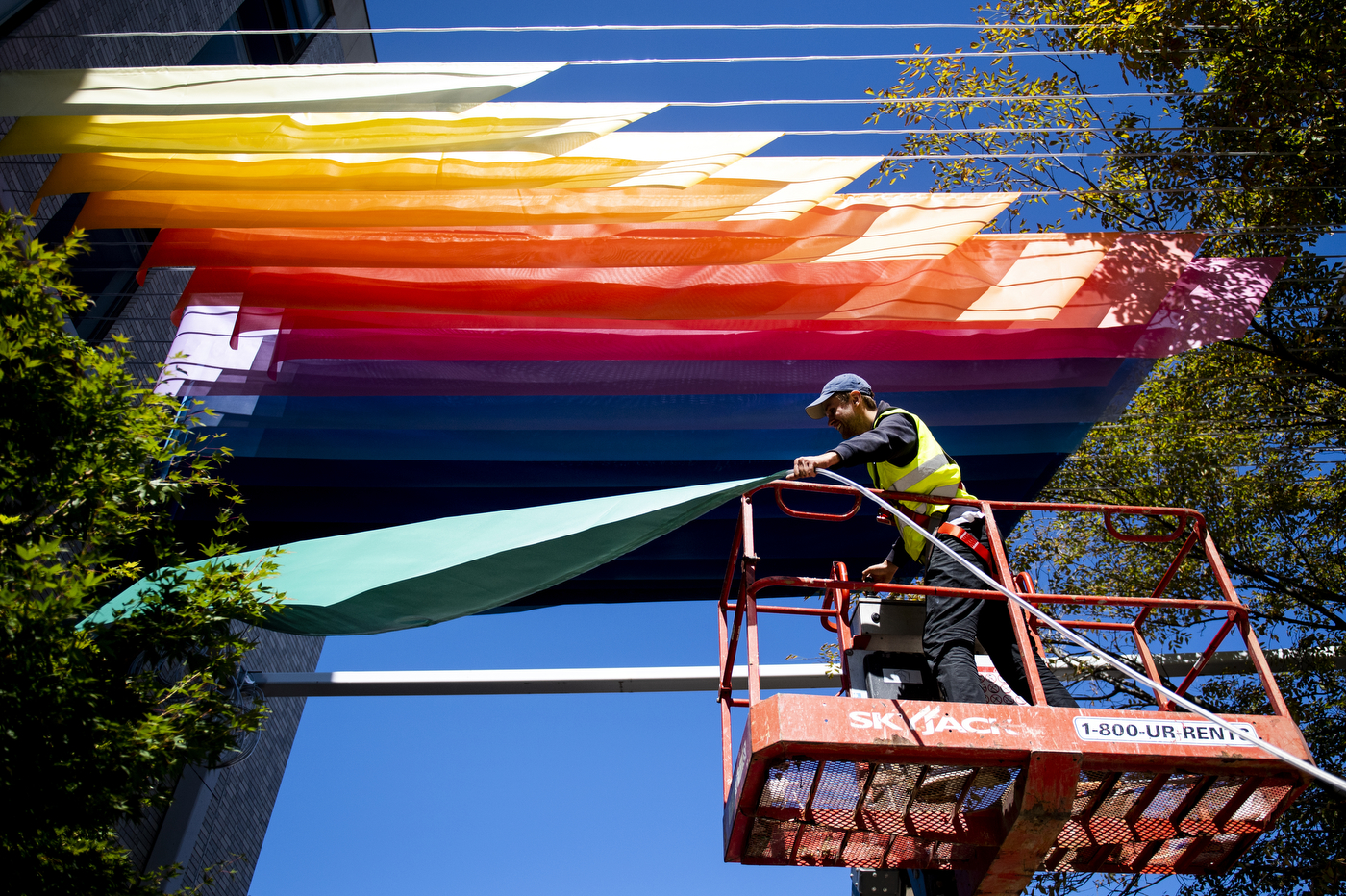
The colors flow from red to peach to a foamy blue-green and back again. Topicć said he and Westphal drew inspiration from Northeastern’s logos, and the university’s signature red can be found among the more than six dozen different colors the artists used for both installations.
The mesh banners wave and flutter in the wind, creating an optical illusion as they move against each other.
“It looks sort of like a digital flicker, right?” Topic said, standing back and looking up at his work. “As they [the banners] let the light in, you can see through them, and see new colors.”



Quintessenz has created public art in cities across the globe, including Berlin and Hamburg, Germany; Shanghai and Hong Kong, China; and Paris, France. After finishing their pieces at Northeastern, the artists were headed to the country of Georgia to begin a new project.
“Everything we do is based on the space where it will live,” Topic said. Because the colorful banners they designed for Northeastern are situated at the top of the staircases in Richardson Plaza, onlookers can view the work from different heights, seeing something new at each level.
For media inquiries, please contact media@northeastern.edu.
